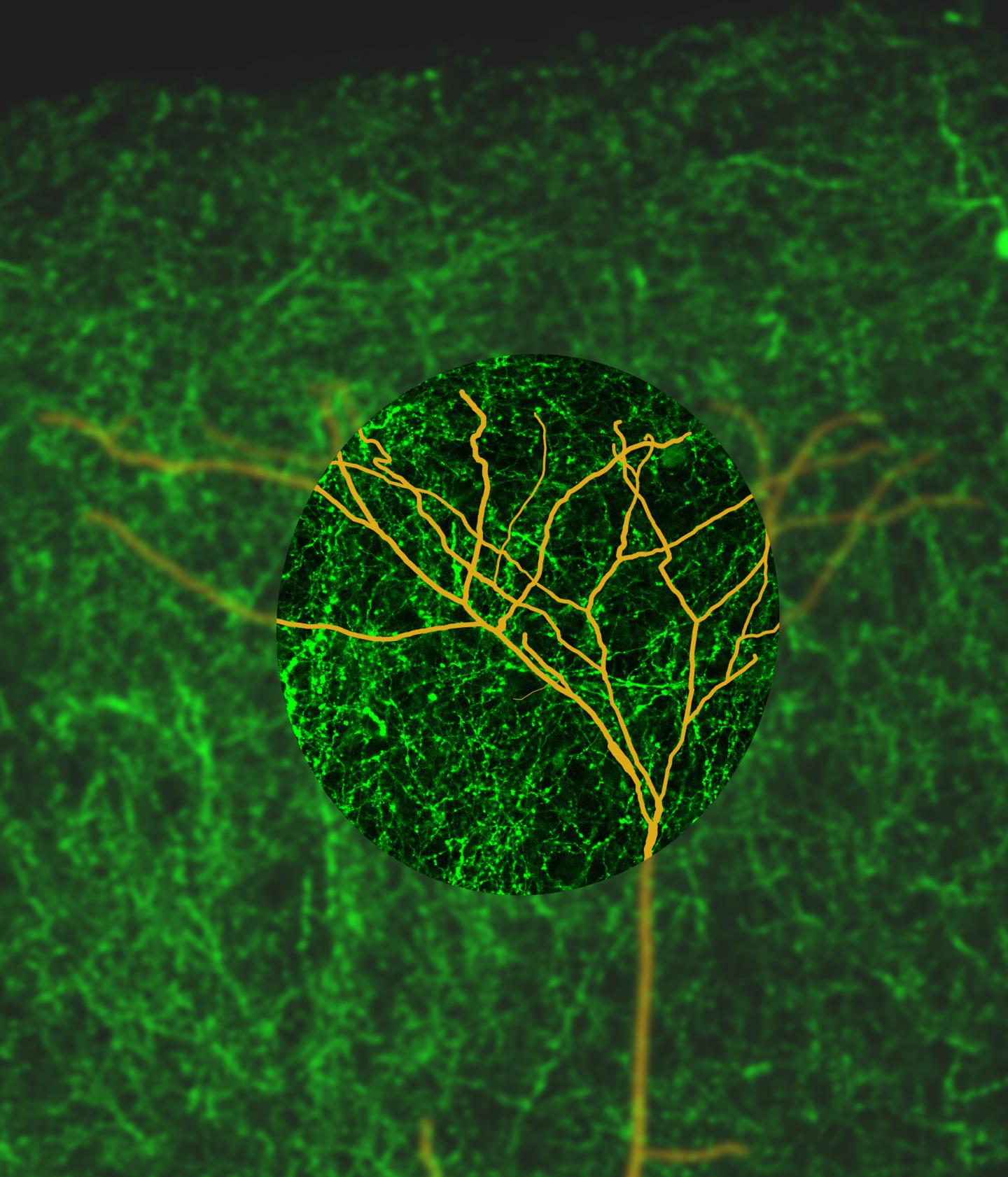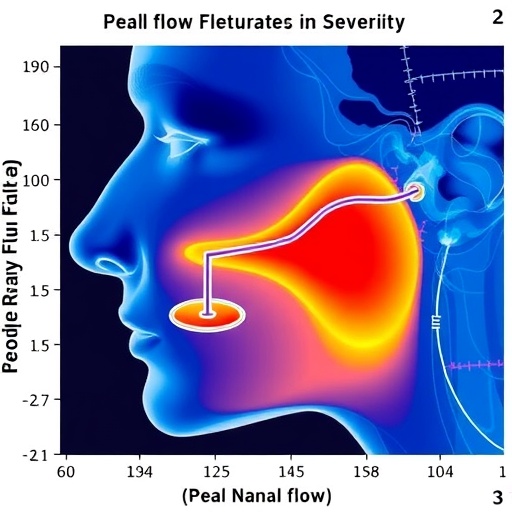
Credit: Artwork by Lee Fletcher, Queensland Brain Institute, The University of Queensland.
University of Queensland researchers have discovered a key mechanism in the brain that may underlie our ability to rapidly focus attention.
Our brains are continuously bombarded with information from the senses, yet our level of vigilance to such input varies, allowing us to selectively focus on one conversation and not another.
Professor Stephen Williams of the Queensland Brain Institute at UQ explains, “If we want to give our full concentration, something happens in the brain to enable us to focus and filter out distractions.”
“There must be a mechanism that signals the thing we want to focus on.”
However, this mechanism is not well understood, he says.
Research has shown that the electrical activity of the neocortex of the brain changes, when we focus our attention. Neurons stop signalling in sync with one another and start firing out of sync.
This is helpful, says Williams, because it allows individual neurons to respond to sensory information in different ways. Thus, you can focus on a car speeding down the road or on what a friend is saying in a crowded room.
It’s known that the cholinergic system in the brain plays an important role in triggering this desynchronization.
The cholinergic system consists of clusters of special neurons that synthesise and release a signalling molecule called acetylcholine, he explains, and these clusters make far reaching connections throughout the brain.
Not only does this cholinergic system act like a master switch, but mounting evidence suggests it also enables the brain to identify which sensory input is the most salient – i.e. worthy of attention – at any given moment and then shine a spotlight on that input.
“The cholinergic system broadcasts to the brain, ‘this thing is really important to be vigilant to’,” says Williams.
He adds that the cholinergic system has been proposed to have a far-reaching impact on our cognitive abilities.
“Destruction of the cholinergic system in animals profoundly degrades cognition, and the formation of memory,” he says.
“Importantly, in humans a progressive degeneration of the cholinergic system occurs in devastating diseases that blunt cognition and memory, such as Alzheimer’s disease.”
But precisely which neurons in the cortex are being targeted by this master switch and how it’s able to influence their function was unknown.
Williams and QBI researcher Lee Fletcher wondered if layer 5 B-pyramidal neurons, the ‘output’ neurons of the neocortex, might be involved, because they are intimately involved in how we perceive the world.
“The output neurons of the neocortex perform computations that are thought to underlie our perception of the world,” says Williams.
Williams and Fletcher wanted to know if the cholinergic system is able to influence the activity of these output neurons.
Using a technique called optogenetics, they modified neurons in the cholinergic system in the brains of mice so that they could be activated with a flash of blue light, triggering a sudden release of acetylcholine.
This allowed the researchers to closely monitor the interaction between the cholinergic system and the output neurons.
They discovered that if the output neurons were not currently active, not much happened.
But when those neurons received excitatory input to their dendrites, the cholinergic system was able to massively increase their activity.
“It’s as if the cholinergic system has given a ‘go’ signal,” says Fletcher, enabling the output neurons of the neocortex to powerfully respond.
Importantly, this change was selective, and only apparent when excitatory input was being processed in the dendrites of the ‘output’ neurons.
“We have known for some time that the dendrites of the output neurons of the neocortex only become active when animals are actively performing a behaviour, and that this activity is correlated with perception and task performance,” says Williams.
This new work demonstrates that the cholinergic system is critical to this transition in mice and rats, allowing the output neurons to perform computations in a state-dependent manner.
“We suggest that this switch also occurs in the human neocortex, allowing us to rapidly switch our state of vigilance and attention,” says Williams.
“Our work therefore provides important insight into how the progressive degeneration of the cholinergic system in disease blunts human cognition.”
The findings “A dendritic substrate for the cholinergic control of neocortical output neurons” are published in the journal Neuron.
###
Media Contact
Stephen Williams
[email protected]
61-424-701-128
Original Source
https:/
Related Journal Article
http://dx.




